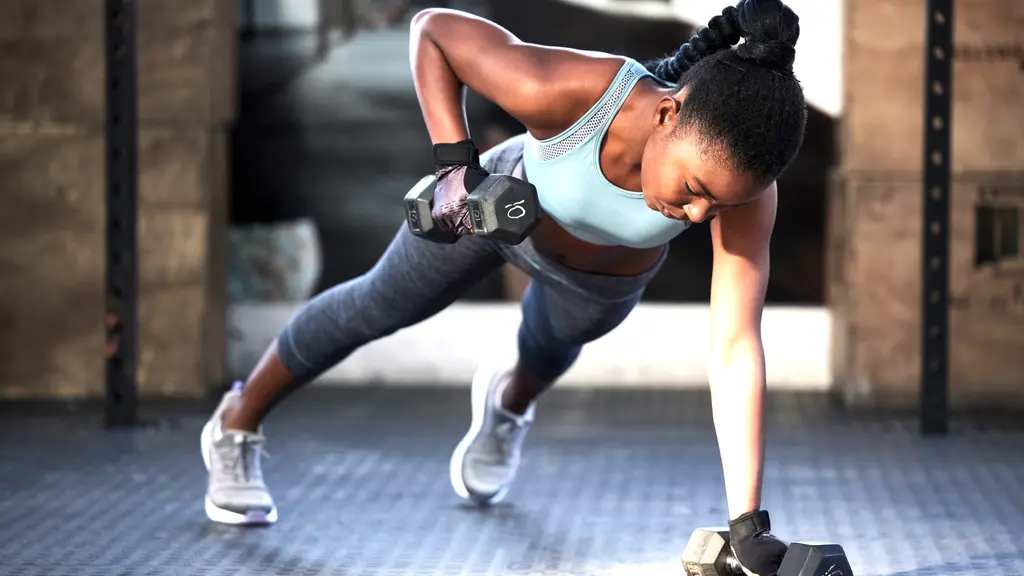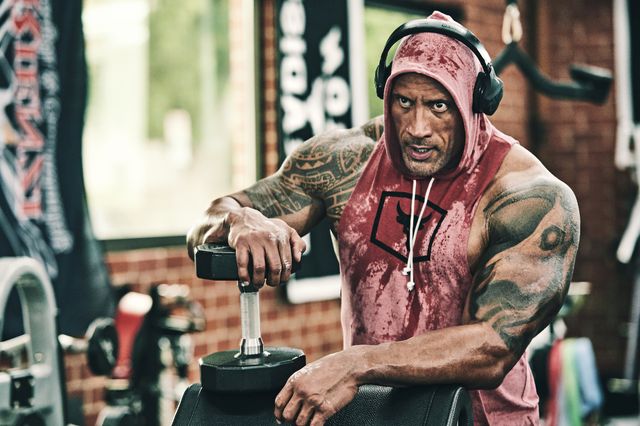Incorporating effective recovery techniques into your fitness regimen is essential for achieving sustainable progress. Without proper recovery, you risk injury, fatigue, and diminished performance, which can hinder your overall fitness journey. This article outlines practical recovery strategies that can enhance muscle repair, improve performance, and promote long-term health.
By understanding the importance of recovery and implementing actionable techniques—such as active recovery exercises, proper nutrition, and mindfulness practices—you can ensure your body is prepared for the demands of your workouts. This approach will not only help you stay on track with your fitness goals but also maintain a balanced and healthy lifestyle.
In this article you will find:
Mastering the Mindset for Lasting Fitness Success
Achieving lasting fitness success is as much about mental fortitude as it is about physical effort. While workout routines and nutritional plans are vital components of any fitness journey, the right mindset is the foundation that supports them. By cultivating a strong mental approach, you can overcome obstacles, stay motivated, and ultimately transform your health and well-being.
The Power of Positive Thinking
Your thoughts significantly influence your behavior and performance. Embracing a positive mindset can help you approach fitness challenges with enthusiasm rather than dread. Here are a few techniques to foster positive thinking:
- Affirmations: Start each day with powerful affirmations that reinforce your commitment to fitness. Statements like “I am capable of achieving my goals” can shift your focus to what you can accomplish.
- Visualization: Spend a few minutes each day visualizing your success. Picture yourself completing a challenging workout or reaching a specific fitness milestone, which can boost your motivation.
- Gratitude Journaling: Keep a journal where you note things you are grateful for related to your fitness journey. This practice helps you appreciate your progress and the effort you put in.
Setting Realistic Goals
Setting achievable and realistic goals is crucial for maintaining motivation. Break larger goals into smaller, manageable milestones that allow you to celebrate progress along the way. Consider using the SMART criteria for goal setting:
- Specific: Clearly define what you want to achieve.
- Measurable: Establish criteria for tracking your progress.
- Achievable: Ensure your goal is realistic and attainable.
- Relevant: Align your goals with your personal values and interests.
- Time-bound: Set a deadline to create a sense of urgency.
By setting SMART goals, you create a clear pathway to success, which can reduce feelings of overwhelm and increase your chances of sticking with your fitness plan.
Overcoming Mental Barriers
Everyone faces mental barriers that can hinder progress. Identifying these obstacles is the first step in overcoming them. Common barriers include:
- Fear of Failure: Understand that setbacks are a natural part of the journey. Instead of fearing failure, view it as an opportunity to learn and grow.
- Lack of Time: Reframe your mindset to prioritize fitness as an essential part of your daily routine. Even short workouts can yield significant benefits.
- Comparison to Others: Focus on your personal journey rather than comparing yourself to others. Everyone progresses at their own pace, and your progress is what matters most.
Addressing these mental barriers requires self-awareness and a willingness to challenge negative thoughts. Techniques such as mindfulness and meditation can help you cultivate a more positive mental environment.
Building a Support System
Surrounding yourself with supportive individuals can significantly enhance your fitness journey. Engage with friends, family, or online communities that share your health goals. Here are a few benefits of having a strong support system:
- Accountability: Having someone to share your goals with can keep you accountable and motivated.
- Encouragement: Supportive friends and family can provide the encouragement you need to push through tough days.
- Shared Experiences: Engaging with others on a similar journey can help you share tips, strategies, and success stories that inspire you.
Consider joining local fitness classes or online forums where you can connect with like-minded individuals who can uplift and motivate you.
Conclusion
Mastering the mindset for lasting fitness success is an ongoing journey that requires commitment, self-reflection, and a proactive approach to mental well-being. By cultivating positive thinking, setting realistic goals, overcoming mental barriers, and building a supportive network, you can create a powerful foundation for your fitness endeavors. For more insights on developing a resilient mindset, check out this resource on fitness psychology.
Essential Nutrition Strategies for Optimal Energy
Nutrition plays a pivotal role in fueling your body for optimal performance and sustained energy throughout the day. The right dietary choices can significantly enhance your workouts, recovery, and overall well-being. This section delves into essential nutrition strategies that empower you to maintain high energy levels and achieve your fitness goals.
The Importance of Balanced Macronutrients
Understanding macronutrients—carbohydrates, proteins, and fats—is crucial for designing an effective diet. Each macronutrient serves a unique purpose in your body:
- Carbohydrates: These are the body’s primary energy source. Complex carbohydrates like whole grains, legumes, and vegetables provide sustained energy, while simple carbohydrates offer quick energy boosts.
- Proteins: Essential for muscle repair and growth, proteins help maintain muscle mass, especially during weight loss. Sources include lean meats, dairy, beans, and legumes.
- Fats: Healthy fats, such as those from avocados, nuts, and olive oil, support hormonal balance and provide long-lasting energy, especially during extended workouts.
To maintain optimal energy levels, aim for a balanced intake of these macronutrients tailored to your specific activity levels and goals.
Timing Your Meals for Maximum Energy
Meal timing can significantly impact your energy levels. Here are key strategies to consider:
- Pre-Workout Nutrition: Consume a meal or snack rich in carbohydrates and moderate in protein about 30 to 60 minutes before exercising. Options include a banana with nut butter or Greek yogurt with fruit.
- Post-Workout Recovery: After your workout, prioritize protein and carbohydrates to replenish glycogen stores and aid muscle recovery. A smoothie with protein powder and fruits or a turkey sandwich can be effective choices.
- Regular Meals: Eating smaller, frequent meals throughout the day can help maintain stable blood sugar levels, preventing energy crashes. Incorporate healthy snacks like nuts, fruits, or yogurt between meals.
Hydration: The Key to Sustained Energy
Staying hydrated is vital for maintaining optimal energy levels and performance. Dehydration can lead to fatigue, decreased focus, and impaired physical performance. Follow these hydration tips:
- Drink Water Regularly: Aim to drink at least eight 8-ounce glasses of water daily, adjusting based on your activity level and climate conditions.
- Monitor Hydration Status: Pay attention to your body’s signals. Thirst is a clear indicator, but also monitor urine color; pale yellow indicates good hydration.
- Incorporate Electrolytes: During prolonged workouts, consider electrolyte drinks to replace lost minerals. Coconut water or sports drinks can be excellent options.
Incorporating Nutrient-Dense Foods
Opting for nutrient-dense foods ensures you get the most vitamins and minerals to support energy levels and overall health. Focus on these food groups:
- Fruits and Vegetables: Rich in vitamins, minerals, and antioxidants, these foods can help reduce inflammation and enhance recovery. Aim for a variety of colors on your plate.
- Whole Grains: Foods like quinoa, brown rice, and oats provide sustained energy due to their fiber content, which helps regulate blood sugar levels.
- Nuts and Seeds: Packed with healthy fats, protein, and fiber, these snacks can provide a quick energy boost while keeping you satiated.
Incorporating these foods into your diet will not only fuel your workouts but also promote overall health and vitality.
Consider Professional Guidance
If you are unsure about your nutritional needs or how to tailor your diet for optimal energy, consider consulting a registered dietitian or nutritionist. They can provide personalized guidance based on your individual goals, preferences, and lifestyle. For more information on nutrition and meal planning, visit Get Age Fit for expert resources and support.
Effective Workout Routines to Maximize Results
Designing an effective workout routine is essential for maximizing results and achieving your fitness goals. Whether you’re aiming to build muscle, lose weight, or improve endurance, the right combination of exercises and training techniques can make all the difference. This section explores various workout routines tailored to diverse fitness objectives, ensuring you can find a plan that suits your needs.
Strength Training for Muscle Growth
Strength training is crucial for building muscle mass and enhancing overall strength. Incorporating compound exercises—movements that engage multiple muscle groups—can lead to more effective results. Here are some key principles for a successful strength training routine:
- Compound Exercises: Focus on exercises like squats, deadlifts, bench presses, and pull-ups that work several muscle groups simultaneously.
- Progressive Overload: Gradually increase the weight or resistance you use in your workouts. This principle ensures continual muscle adaptation and growth.
- Rest and Recovery: Allow adequate recovery time between workouts targeting the same muscle groups. Aim for 48 hours of rest for optimal recovery and muscle growth.
For a well-rounded strength training program, consider training 3-4 times a week, focusing on different muscle groups each session.
 Cardio Workouts for Fat Loss and Endurance
Cardio Workouts for Fat Loss and Endurance
Cardiovascular exercise is essential for burning calories, improving heart health, and enhancing endurance. Here are some effective cardio routines to incorporate into your fitness plan:
- High-Intensity Interval Training (HIIT): This method alternates short bursts of intense activity with rest or low-intensity periods. An example includes sprinting for 30 seconds, followed by 1-minute walking, repeated for 20 minutes.
- Steady-State Cardio: Engage in moderate-intensity activities like jogging, cycling, or swimming for an extended period (30-60 minutes). This approach helps build endurance and burns fat.
- Incorporating Variety: Mix different cardio activities to prevent boredom and work different muscle groups. Try a mix of running, cycling, and rowing throughout the week.
Flexibility and Mobility Workouts
Incorporating flexibility and mobility exercises into your routine can enhance performance, reduce injury risk, and improve recovery. Here’s how to include these workouts:
- Dynamic Stretching: Perform dynamic stretches as part of your warm-up to prepare your muscles for activity. Examples include leg swings and arm circles.
- Static Stretching: After your workouts, engage in static stretching to improve flexibility. Hold each stretch for 15-30 seconds to enhance muscle recovery.
- Yoga and Pilates: Consider incorporating yoga or Pilates sessions into your routine. These practices enhance flexibility, core strength, and overall body awareness.
Creating a Balanced Weekly Workout Plan
To maximize results, it’s essential to create a balanced weekly workout plan that includes strength training, cardio, and flexibility workouts. Here’s a sample weekly routine:
- Monday: Upper body strength training
- Tuesday: HIIT cardio session
- Wednesday: Lower body strength training
- Thursday: Steady-state cardio (e.g., jogging)
- Friday: Full-body strength training
- Saturday: Yoga or Pilates for flexibility
- Sunday: Rest and recovery
This balanced approach ensures all aspects of fitness are covered, promoting overall health and performance.
Utilizing Technology for Enhanced Results
In today’s digital age, various apps and wearable technology can assist you in tracking your progress and optimizing your workouts. Consider using:
- Fitness Tracking Apps: Apps like MyFitnessPal and Strava can help you monitor your workouts, nutrition, and overall progress.
- Wearable Devices: Fitness trackers and smartwatches can provide real-time data on heart rate, calories burned, and activity levels, allowing for more informed training decisions.
Utilizing these tools can help you stay accountable and motivated throughout your fitness journey.
For more structured workout plans and personalized training options, consider exploring resources from Get Age Fit, where you can find tailored programs to meet your specific fitness goals.
Incorporating Recovery Techniques for Sustainable Progress
Recovery is a crucial component of any fitness regimen, playing a vital role in helping your body repair, rebuild, and become stronger. Without adequate recovery, you risk injury, burnout, and stagnation in your progress. This section explores effective recovery techniques that promote sustainable progress, enabling you to maintain a balanced approach to your fitness journey.
The Importance of Recovery
Understanding the significance of recovery is essential for anyone serious about their fitness goals. Here are key reasons why recovery should be prioritized:
- Muscle Repair: During exercise, especially strength training, tiny tears occur in muscle fibers. Recovery allows these fibers to repair, leading to increased strength and muscle growth.
- Injury Prevention: Adequate recovery reduces the risk of overuse injuries by allowing your muscles, joints, and connective tissues to heal.
- Performance Enhancement: Recovery helps to replenish energy stores and restore hydration, which can enhance performance in subsequent workouts.
Active Recovery Techniques
Active recovery involves low-intensity activities that promote blood flow to muscles without adding stress. Here are some effective active recovery techniques:
- Light Aerobic Exercise: Engage in activities such as walking, cycling, or swimming at a low intensity to keep your body moving without overexerting yourself.
- Yoga and Stretching: Incorporating yoga or gentle stretching routines can improve flexibility, reduce muscle tightness, and promote relaxation.
- Foam Rolling: Using a foam roller can help release muscle tension and improve circulation, aiding in recovery and reducing soreness.
 Rest and Sleep
Rest and Sleep
Quality sleep is one of the most effective recovery tools available. Here’s why prioritizing rest and sleep is crucial:
- Hormonal Balance: Sleep helps regulate hormones like cortisol and growth hormone, which are vital for recovery and muscle growth.
- Cognitive Function: Adequate sleep improves focus, decision-making, and overall mental clarity, all of which are essential for effective workouts.
- Muscle Recovery: During deep sleep, blood flow to muscles increases, providing them with the nutrients needed for repair and growth.
Aim for 7-9 hours of quality sleep each night to optimize recovery and performance.
Nutritional Recovery Strategies
Nutrition plays a critical role in recovery. Here are some strategies to enhance your recovery through diet:
- Post-Workout Nutrition: Consume a balanced meal or snack within 30 minutes after your workout. Focus on a combination of protein and carbohydrates to replenish glycogen stores and promote muscle repair.
- Hydration: Rehydrating after exercise is vital. Consider electrolyte-rich drinks after intense workouts to restore lost minerals.
- Anti-Inflammatory Foods: Incorporate foods rich in omega-3 fatty acids, such as fatty fish, walnuts, and flaxseeds, as well as antioxidants found in fruits and vegetables to combat inflammation and promote healing.
Mindfulness and Relaxation Techniques
Incorporating mindfulness practices can greatly enhance recovery. Here are techniques to consider:
- Deep Breathing Exercises: Practicing deep breathing can help reduce stress levels and promote relaxation, aiding in recovery.
- Meditation: Regular meditation can improve focus and reduce anxiety, which can have a positive impact on your overall fitness journey.
- Progressive Muscle Relaxation: This technique involves tensing and relaxing each muscle group in the body, helping to alleviate tension and promote relaxation.
 Utilizing Technology for Recovery
Utilizing Technology for Recovery
Various technologies can enhance recovery efforts. Consider integrating the following into your routine:
- Recovery Apps: Apps like Whoop and Oura can track your sleep, recovery metrics, and readiness for workouts, providing valuable insights into your recovery process.
- Compression Gear: Wearing compression garments can improve circulation and reduce muscle soreness post-exercise.
- Massage Therapy: Regular massages can help alleviate muscle tension and promote relaxation, accelerating recovery.
Incorporating these recovery techniques will not only enhance your performance but also ensure you maintain sustainable progress in your fitness journey. For more insights on optimizing recovery and performance, visit Get Age Fit for expert resources and tailored programs.
Mastering your fitness journey requires a strong mindset, effective nutrition, workout routines, and recovery techniques. Cultivating a positive mindset, setting realistic goals, and surrounding yourself with a supportive community are essential for overcoming mental barriers. Additionally, balancing macronutrients, timing meals strategically, and staying hydrated can optimize energy levels and enhance workout performance.
Incorporating recovery techniques is crucial for sustainable progress. Active recovery activities, quality sleep, and nutritional strategies, such as post-workout meals rich in protein and carbohydrates, aid muscle repair and prevent injuries. Utilizing technology like fitness tracking apps and compression gear can further enhance recovery efforts, ensuring you remain motivated and on track to achieve your fitness goals.


 Cardio Workouts for Fat Loss and Endurance
Cardio Workouts for Fat Loss and Endurance Rest and Sleep
Rest and Sleep Utilizing Technology for Recovery
Utilizing Technology for Recovery

